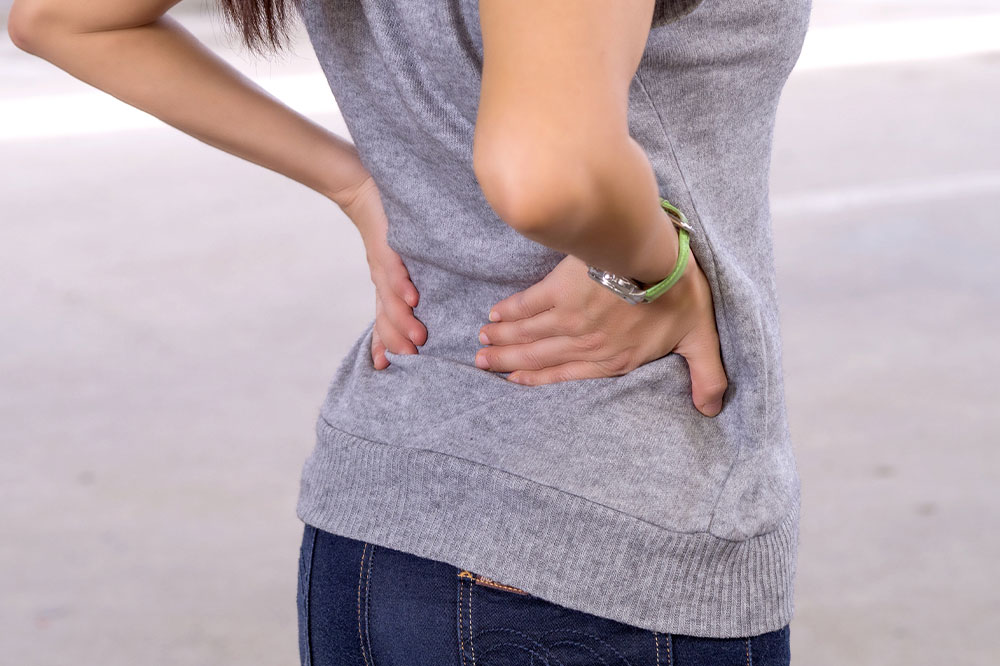
Back pain – Causes, symptoms, and ways to manage
The back is to the human body what bricks are to a building – it holds the body’s structure upright. Consequently, it is typically among the first organs to be affected during physical exertion. Research indicates that nearly 8% of adults in the country experience chronic back pain, making it the sixth most expensive health condition to treat. Read further to learn about back pain’s common causes and symptoms and a few treatment options.
Causes
Multiple factors like injuries, aging, and health conditions like kidney stones and ankylosing spondylitis lead to back pain.
Kidney stone
Some individuals with kidney stones may experience shooting pain on one side of their lower back, below their ribs. Moreover, back pain associated with kidney stones occurs in spurts and varies in intensity each time.
Injury
Back sprains can result from muscle or ligament injuries, which may occur due to a fall, accident, lifting heavy objects, sudden shaky movements, etc.
Ankylosing spondylitis
Ankylosing spondylitis, a form of arthritis characterized by the fusing of some vertebral bones, typically involves severe pain and stiffness in the lower back and hips. Therefore, chronic lower back pain may indicate the onset of ankylosing spondylitis.
Age
Aging results in the spinal discs’ narrowing and increased pressure on the joints, often causing inflammation and resulting in back pain. Lower back pain is a major debilitating health condition among individuals above 60 years of age.
Cholesterol
High cholesterol can lead to atherosclerosis – the fat accumulation on the artery walls. Atherosclerosis in the vertebral arteries can cause lower back pain and disc degeneration.
Signs and symptoms
Understanding the warning signs of back pain is necessary for timely intervention and management. Some of the common indicators are listed here.
Increased pain while lifting heavy objects
Lifting heavy objects can strain the back and spinal cord. Such pain can be caused during loading, carrying, or unloading heavy goods.
Spurts of severe pain
Many individuals with back pain often experience waves of severe backache, particularly at specific times, for example, while waking up.
Pain in surrounding areas
Back pain often spreads to other surrounding parts of the body, such as the buttocks, hips, and shoulders.
Burning sensation in the back
Some people with back problems experience a burning sensation in the back, typically due to infections, herniated discs, nerve compression, etc.
Treatment options
Although methods like physical therapy, massage therapy, and posture correction help to an extent in relieving back pain, surgery will be recommended in advanced cases.
Physical therapy
Physical therapy incorporates certain exercises to ensure better strength and flexibility. These exercises are administered based on individual symptoms and severity and are often effective in ensuring pain relief.
Massage therapy
Massage therapy helps relieve back pain immediately, particularly on a short-term basis. Some popular massage techniques used to relieve back pain include effleurage (long massage strokes from top to bottom), petrissage (massaging in kneading motion), and friction (involving applying pressure on the pain areas).
Posture correction techniques
Poor posture can cause or aggravate back issues; therefore, posture correction is essential to relieving backache. The use of tapes, straps, bands, etc., can help correct one’s posture, preventing slouching and bending.
Back surgery
Surgery is suggested as the final intervention for advanced back problems wherein the patient fails to respond to other treatments. Back surgery is typically used on patients with degenerative disc disease and spine injuries.
Back-strengthening exercises
Back exercises like bridges, leg raises, planks and side planks, crunches, and partial curls are highly effective in ensuring posture correction and strengthening the back muscles.




